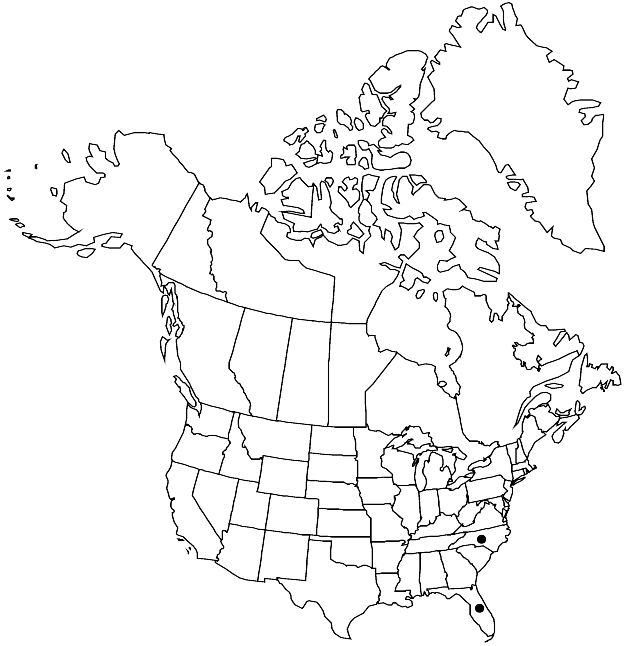Plagiobryoides cellularis
Phytologia 91: 499. 2009.
Plants pale pink-green. Stems 0.5–1 cm, weakly julaceous, innovations many; rhizoids few on proximal stem. Leaves crowded, imbricate when dry, erect when moist, narrowly to broadly ovate, flat or weakly concave, 0.4–1 (–2.5) mm; base not decurrent, pink; margins plane or recurved proximally, 1-stratose, limbidium absent or rarely 1-stratose proximally; apex acute; costa reaching apex to very short-excurrent; proximal laminal cells long-rectangular, (60–) 80–100 × 18–24 µm, 4–5: 1, sometimes bulging, walls thin; distal cells elongate hexagonal, 30–70 × 16–22 µm, 2–4: 1, walls thin. Specialized asexual reproduction absent. Sexual condition dioicous. [Seta thick, (1–) 2–3 cm, flexuose to twisted. Capsule inclined to nutant, 2–4 mm; hypophysis strongly differentiated, elongate; operculum apiculate; peristome well developed; exostome pale-yellow or tan proximally, teeth lanceolate, long; endostome hyaline to pale-yellow, not adherent to exostome, segments present, sometimes longer than exostome, cilia usually absent, occasionally 1 or 2. Spores 20–28 µm, papillose, yellowbrown].
Habitat: Damp to seepy rock
Elevation: low elevations (10 m)
Distribution

Fla., N.C., Mexico, West Indies, Central America, South America, se Asia (including Indonesia), Africa, Pacific Islands (New Guinea), Australia
Discussion
Plagiobryoides cellularis is a widespread pantropical species. The North American material is very poor, consisting of a few small sterile shoots from two sites: on rocks near the sea on the Florida Keys and wet rock in North Carolina.
Selected References
None.
Lower Taxa
"narrower" is not a number."narrow" is not a number.